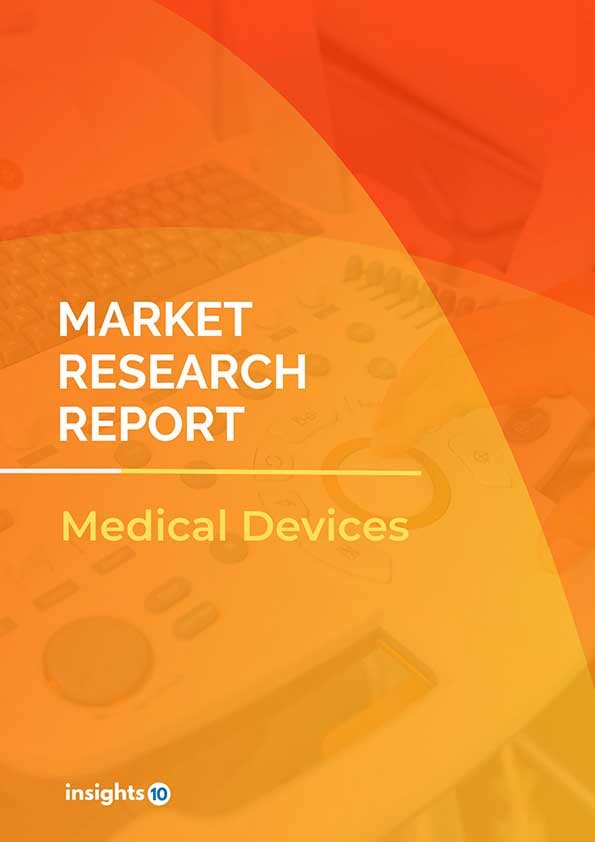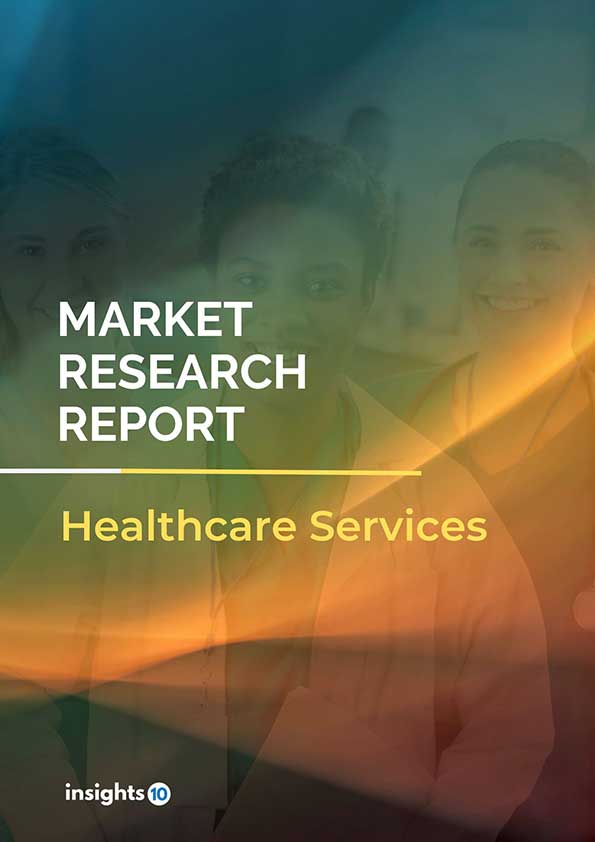Germany MRI Market Analysis
The Germany MRI Market was valued at $243.02 Mn in 2023 and is predicted to grow at a CAGR of 4.7% from 2023 to 2030, to $335.18 Mn by 2030. The key drivers of this industry include the high prevalence of cardiovascular diseases, technological advancements in MRI, and increased healthcare expenditure. The key players in the industry are Siemens Healthineers, Hitachi Medical Systems, Hologic Inc., and SternMed GmbH among others.
Buy Now

Germany MRI Market Executive Summary
The Germany MRI Market is at around $243.02 Mn in 2023 and is projected to reach $335.18 Mn in 2030, exhibiting a CAGR of 4.7% during the forecast period.
Magnetic resonance imaging (MRI) is a type of diagnostic test that can create detailed images of nearly every structure and organ inside the body. It uses strong magnetic fields and radio waves to produce detailed images of the inside of the body. The MRI machine is a large, cylindrical (tube-shaped) device that generates a powerful magnetic field around the patient and emits pulses of radio waves from a scanner. Some MRI machines resemble narrow tunnels, while others are more spacious. The intense magnetic field produced by the MRI scanner causes the atoms in your body to align in the same direction. Subsequently, radio waves are emitted from the MRI machine, which disrupt this alignment, causing the atoms to return to their original positions. As the radio waves cease, the atoms revert to their initial alignment and emit radio signals. These signals are then picked up by a computer, which transforms them into an image of the area being examined. This image is displayed on a viewing monitor.
Among member countries of the Organization of Economic Co-operation and Development (OECD), Germany has 35.25 units available per every million of its population. The market therefore is driven by significant factors like the high prevalence of cardiovascular diseases, technological advancements in MRI, and increased healthcare expenditure. However, high cost, limitation of technology, and lack of proper reimbursement restrict the growth of the market.
The leading pharmaceutical companies include GE Healthcare and Koninklijke Philips N.V. for MRI machines. SternMed GmbH, Esaote, and Neoscan are also significant contributors to the MRI market, with continuous research and development activities.

Market Dynamics
Market Growth Drivers
Technological Advancement: The German government is supporting the development of new MRI technologies, such as portable systems and AI-powered scanners, to improve diagnosis and treatment. Portable MRI systems can be transported to remote locations or used in emergencies, improving access to advanced imaging. For example, DeepSpin GmbH secured $3.81 Mn in public funding in 2021 to develop next-generation, AI-powered MRI machines.
High Prevalence of Cardiovascular Diseases: Germany has seen a significant increase in deaths due to circulatory diseases, which account for the highest death rates for cardiovascular diseases in Europe. CVDs are the leading cause of death in Germany, accounting for about 35% of all deaths. Doctors use MRI, particularly cardiovascular MRI, to diagnose and monitor circulatory diseases. MRI allows them to examine the heart and arteries without radiation exposure.
Increase Healthcare Expenditure: The German government's increased healthcare spending which supports the future development of the MRI market in the country. Germany spent around 12.5% of its GDP on healthcare costs, totaling about $466.7 Bn.
Market Restraints
High Cost: MRI machines are expensive capital investments for hospitals and clinics, with prices ranging from hundreds of thousands to millions of dollars depending on the model and features. The high upfront costs can make it challenging for some healthcare facilities to acquire MRI systems, limiting the availability of these services.
Limitation of Technology: Germany has many cardiovascular patients and MRI machines may not be suitable for larger patients or those with certain metal implants, pacemakers, or other devices that are incompatible with strong magnetic fields. Claustrophobia is another common issue, as many MRI scanners are narrow and enclosed, causing anxiety in some patients.
Lack of proper reimbursement: The costs of MRI procedures are not always fully covered by insurance providers, leading to higher out-of-pocket expenses for patients. This lack of proper reimbursement can limit patient access to MRI services, as they may be less willing or able to pay the full cost themselves.
Regulatory Landscape and Reimbursement Scenario
Germany's regulatory framework for MRI is considered one of the most stringent globally, on par with the EU and US. Federal Office for Drugs and Medical Devices (Bundesinstitut für Arzneimittel und Medizinprodukte - BfArM) is responsible for overseeing medical device regulations in Germany. They can issue specific guidance documents related to MRI safety and operation. MRI systems must meet rigorous standards for electromagnetic compatibility, radiation protection, and patient safety. Manufacturers must obtain regulatory clearance from agencies like the Federal Institute for Drugs and Medical Devices (BfArM) before their MRI products can be marketed in Germany. The approval procedures are lengthy and complex, often delaying the introduction of innovative MRI technologies in the country.
Competitive Landscape
Key Players
Here are some of the major key players in the Germany MRI Market:
- Siemens Healthineers
- GE Healthcare
- Koninklijke Philips NV
- Canon (Canon Medical Systems Corporation)
- Fujifilm Holdings Corporation
- Hitachi Medical Systems
- Hologic Inc.
- Esaote
- Neoscan
- SternMed GmbH
1. Executive Summary
1.1 Device Overview
1.2 Global Scenario
1.3 Country Overview
1.4 Healthcare Scenario in Country
1.5 Regulatory Landscape for Medical Device
1.6 Health Insurance Coverage in Country
1.7 Type of Medical Device
1.8 Recent Developments in the Country
2. Market Size and Forecasting
2.1 Market Size (With Excel and Methodology)
2.2 Market Segmentation (Check all Segments in Segmentation Section)
3. Market Dynamics
3.1 Market Drivers
3.2 Market Restraints
4. Competitive Landscape
4.1 Major Market Share
4.2 Key Company Profile (Check all Companies in the Summary Section)
4.2.1 Company
4.2.1.1 Overview
4.2.1.2 Product Applications and Services
4.2.1.3 Recent Developments
4.2.1.4 Partnerships Ecosystem
4.2.1.5 Financials (Based on Availability)
5. Reimbursement Scenario
5.1 Reimbursement Regulation
5.2 Reimbursement Process for Diagnosis
5.3 Reimbursement Process for Treatment
6. Methodology and Scope
Germany MRI Market Segmentation
By Architecture
- Closed MRI Systems
- Open MRI Systems
By Field Strength
- Low Field MRI Systems
- High Field MRI Systems
- Ultra-High Field MRI Systems
By Application
- Neurology
- Musculoskeletal
- Cardiovascular
- Oncology
- Others ( Abdominal, Pediatric)
By End-User
- Hospitals and Clinics
- Diagnostic Imaging Centers
- Research Institutes
Methodology for Database Creation
Our database offers a comprehensive list of healthcare centers, meticulously curated to provide detailed information on a wide range of specialties and services. It includes top-tier hospitals, clinics, and diagnostic facilities across 30 countries and 24 specialties, ensuring users can find the healthcare services they need.
Additionally, we provide a comprehensive list of Key Opinion Leaders (KOLs) based on your requirements. Our curated list captures various crucial aspects of the KOLs, offering more than just general information. Whether you're looking to boost brand awareness, drive engagement, or launch a new product, our extensive list of KOLs ensures you have the right experts by your side. Covering 30 countries and 36 specialties, our database guarantees access to the best KOLs in the healthcare industry, supporting strategic decisions and enhancing your initiatives.
How Do We Get It?
Our database is created and maintained through a combination of secondary and primary research methodologies.
1. Secondary Research
With many years of experience in the healthcare field, we have our own rich proprietary data from various past projects. This historical data serves as the foundation for our database. Our continuous process of gathering data involves:
- Analyzing historical proprietary data collected from multiple projects.
- Regularly updating our existing data sets with new findings and trends.
- Ensuring data consistency and accuracy through rigorous validation processes.
With extensive experience in the field, we have developed a proprietary GenAI-based technology that is uniquely tailored to our organization. This advanced technology enables us to scan a wide array of relevant information sources across the internet. Our data-gathering process includes:
- Searching through academic conferences, published research, citations, and social media platforms
- Collecting and compiling diverse data to build a comprehensive and detailed database
- Continuously updating our database with new information to ensure its relevance and accuracy
2. Primary Research
To complement and validate our secondary data, we engage in primary research through local tie-ups and partnerships. This process involves:
- Collaborating with local healthcare providers, hospitals, and clinics to gather real-time data.
- Conducting surveys, interviews, and field studies to collect fresh data directly from the source.
- Continuously refreshing our database to ensure that the information remains current and reliable.
- Validating secondary data through cross-referencing with primary data to ensure accuracy and relevance.
Combining Secondary and Primary Research
By integrating both secondary and primary research methodologies, we ensure that our database is comprehensive, accurate, and up-to-date. The combined process involves:
- Merging historical data from secondary research with real-time data from primary research.
- Conducting thorough data validation and cleansing to remove inconsistencies and errors.
- Organizing data into a structured format that is easily accessible and usable for various applications.
- Continuously monitoring and updating the database to reflect the latest developments and trends in the healthcare field.
Through this meticulous process, we create a final database tailored to each region and domain within the healthcare industry. This approach ensures that our clients receive reliable and relevant data, empowering them to make informed decisions and drive innovation in their respective fields.
To request a free sample copy of this report, please complete the form below.
We value your inquiry and offer free customization with every report to fulfil your exact research needs.









































